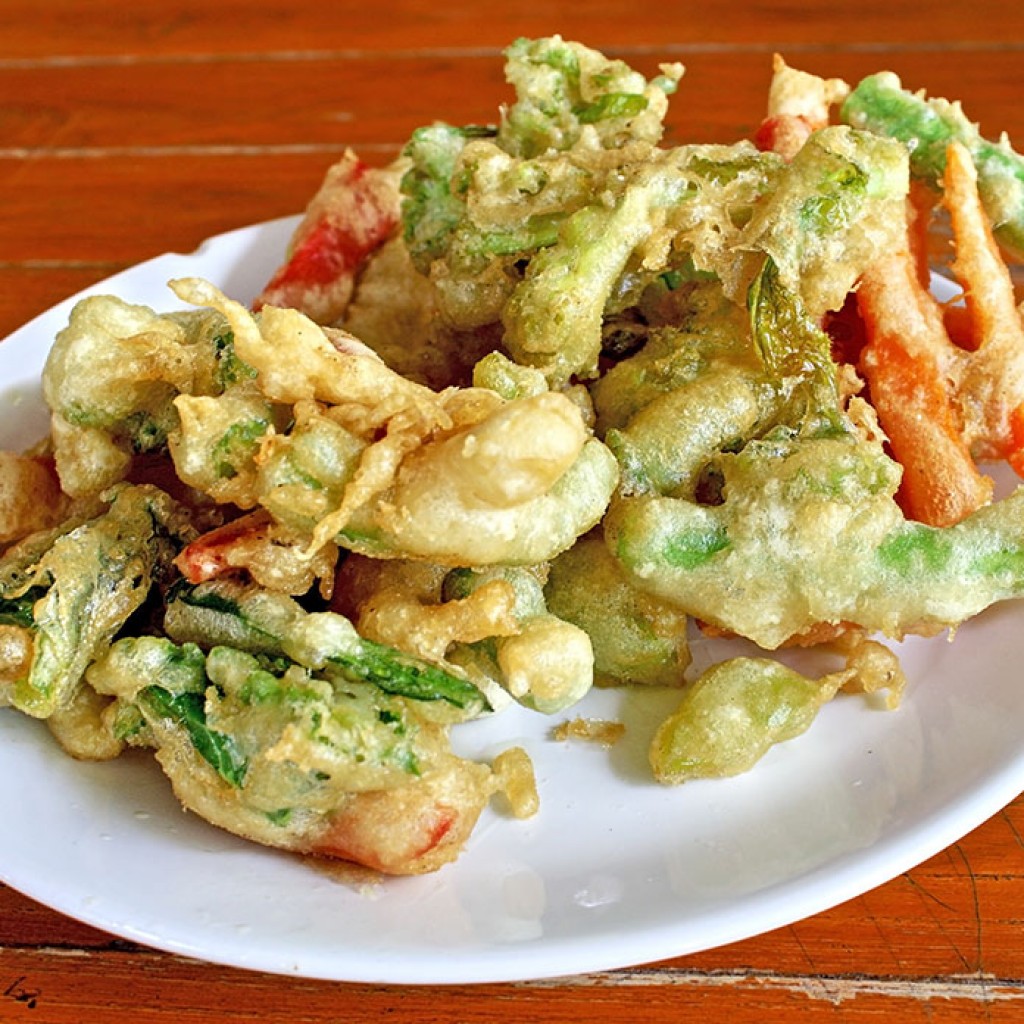To the untrained eye, tempura is an unrefined platter made by simply throwing a mix of vegetables or seafood together with batter and deep frying it. Anyone without any sort of culinary experience would be able to do this, right? As it turns out, that could not be farther from the truth in the case of a well-prepared plate of tempura.
What a good tempura chef accomplishes is a crunchy, savoury flavour and texture through finely battering the fruit de mer, and then frying it until a mere lace shell is left. You definitely want to retain the freshness of the seafood or vegetable that you are cooking, while adding the crispy textures associated with any fried food, all while maintaining a lightness throughout. In other words, any heavy tempura is tempura badly cooked.
The golden rule
In keeping with Japanese culinary tradition, using fresh, seasonal ingredients is what keeps the natural flavour of the dish. A typical dipping sauce might incorporate influences from soy, miso, or umeboshi, all of which are prevalent in Japanese foods in general, but there is also the classic yuzu dressing, with a mayonnaise-esque base and the citrus zing from the Japanese yellow, round, acidic yuzu fruit. That said, because the flavours of the dipping sauces and the fried batter are mere garnishes, the most prominent zest will actually be of the primary ingredients themselves.
That’s why it’s of utmost importance to use only the freshest ingredients available to you, whether it is seafood or veggies. Think long and hard about the effort of frying anything that has been in your fridge for more than 36 hours – is it worth producing something that will ultimately have less than ideal freshness?
Setting aside the complexities of all the creatures of the sea, there is a wealth of amazing vegetables to throw in a tempura dish.
With that most important cooking rule out of the way, let’s take an in-depth look at the best vegetable options for this distinctive form of cooking, and some things to know about cooking them.
The root family
Generally speaking, different veggies will be available depending on the season. Nevertheless, with the globalised production of food, it is of course possible to import virtually any type of produce practically any time of year. Root vegetables, in particular, come in all shapes and sizes and are universally hearty and dry. For that reason, they fry well in hot oil, retaining their crispness despite being cooked, and so make the perfect candidates. Unlike more moist veggies, which might need to be scored or cut into smaller pieces to avoid their moisture leaking into the oil, root vegetables are lower-maintenance, but on average should be cooked for an additional minute than other veggies (depending on the temperature of the oil, of course).
Some examples of root vegetables good for tempura include:
- Kabocha – a type of Japanese pumpkin ripe around the autumn months. To prepare, it only needs to be scrubbed clean with a veggie brush, have the seeds removed, and then cut into slices.
- Carrots – just as easy to prepare, carrots should be cut into roughly 5cm matchsticks, as at this size they tend to blend into a kind of fritter when the batter hits the oil.
- Japanese sweet potatoes – this delicious, nutritious veggie is also easy to prepare. It only requires scrubbing before it can be sliced, battered up, and thrown in. Look for different colours to spice up the presentation for extra points with your dinner guests!
Other favourites
- Shiitake mushrooms – this native fungus to the land of the rising sun is a tempura staple. Remember not to rinse it in water, since it absorbs liquids. Instead, opt to wipe down with a damp paper towel
- Bell pepper – this is a fun choice due to all the different colours available. A bit of extra prep work is required for this vegetable as it retains a lot of water, so make sure to score the skin after removing the seeds and cutting into 5cm slices.
- Japanese eggplant – this is another tricky one to cook due to all the water content. You can choose to cut it into disks at an angle, or cut a smaller sized one lengthwise a few times.
Oh, the possibilities!
Truth be told, there are many more options to use for tempura, such as the renkon lotus root, green beans, or even butternut squash. After all, just about any plant can be fried up and served with delicious sauce, so feel free to veer off the beaten path of the classic veggies and experiment!
To try tempura prepared by the experts, visit a Kobe Jones restaurant today. Find the nearest location to you here.






